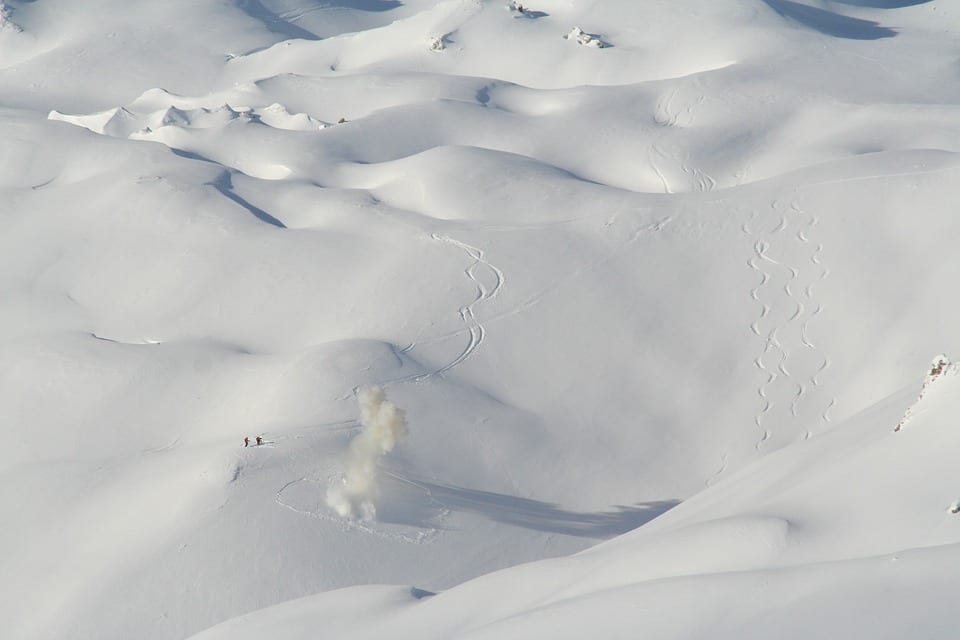
Expat Safety Tips: Avalanche
For expats that live in slowly climes or for travellers who cannot get enough of hitting the slopes, knowing how to spot and react to an avalanche is key for safety. Most avalanches occur between December and April in the Alpine countries of Frances, Austria, Switzerland and Italy. However, the USA has its fair share of avalanche danger, with Colorado, Alaska and Utah some of the most dangerous states.
With avalanches killing more people within national park boundaries than any other natural hazard, read on to find out how you can be best prepared for an avalanche.
What is an avalanche?
Avalanches can be composed of soil, rock or snow. However, snow avalanches are the most common and happen when debris moves down a slope at speed. Most avalanches require a culmination of certain conditions and a trigger, such as a snowmobile, hiker or skier, that causes the top surface of the snow to crack away from the underlying layer and plummet downwards.
Where do most avalanches happen?
Avalanches can happy anywhere there is snow. However, slopes between 30° and 45° tend to experience avalanches as this is the perfect gradient. Any less steep and the snow isn’t affected by gravity and doesn’t move. Any steeper and the slope is less likely to collect snow over time, meaning there is no accumulated snow to physically avalanche.
How to avoid an avalanche
If you are going off the beaten track or hiking ground that is not part of a park you are at a higher risk of becoming victim to an avalanche. National parks and other designated walking or skiing sites have details about where to avoid and where is safe. Ski resorts will also shut runs and specific areas if they believe they are becoming too safe.
Alternatively, if you have experience with the terrain you can use an inclinometer to accurately measure the angle of a slope. If you are unsure as to whether you are safe move away from steep hillsides and slopes.
Always check the weather
Forecasters gather data to make predictions on avalanche risk, and they rate conditions from one (low) through five (extreme) for various altitudes and face aspects or directions.
If the area in which you are in has seen a foot or more of snow fall in the last 24 hours an avalanche could be on the horizon as they are most common during and after a storm.
Weather experts in snowy mountainous areas will always gather data to make predictions about the risk of an avalanche. Avalanches are ranked from one (low risk) to five (extreme risk).
How to react in an avalanche
If you are caught off guard and are in an avalanche near the trigger point try and latch on to anything that is rooted to the ground. The nearer to the trigger point, the less momentum the snow slab has managed to pick up so you may be able to latch on. However, this is least likely to work if you are hit by fast moving snow.
If you are not near the trigger point ditch all your belongings and try and move off of the slope or mountain as quickly as possible. Getting rid of your gear is vital so that you are not struck, particularly with hiking poles or other potentially fatal objects.
If you are hit by the avalanche itself try and swim to keep on top of the debris and do you best to try and move to the side of the flow as much as possible. Failing this, roll on to your back and descend feet first as if you were tackling a water slide. This means your face will be away from the debris and your legs are ready to act as brakes or shock absorbers.
During an avalanche suffocation is the number one killer. Although it can be difficult, try and shield as much snow from around your face using your arm; this gives you an air pocket. If you are trapped, try and wriggle to the surface or jut an arm out of the snow to attract attention.
Are avalanches avoidable?
In most circumstances being caught in an avalanche is completely avoidable. Whilst we cannot control whether an avalanche is going to happen or not, knowing the conditions before venturing out is vital. Always stay off slopes that are steeper than 30° and out of avalanche zones if conditions look risky.
Discover some of Expatriate Group’s other Expat Safety Tips articles below:
